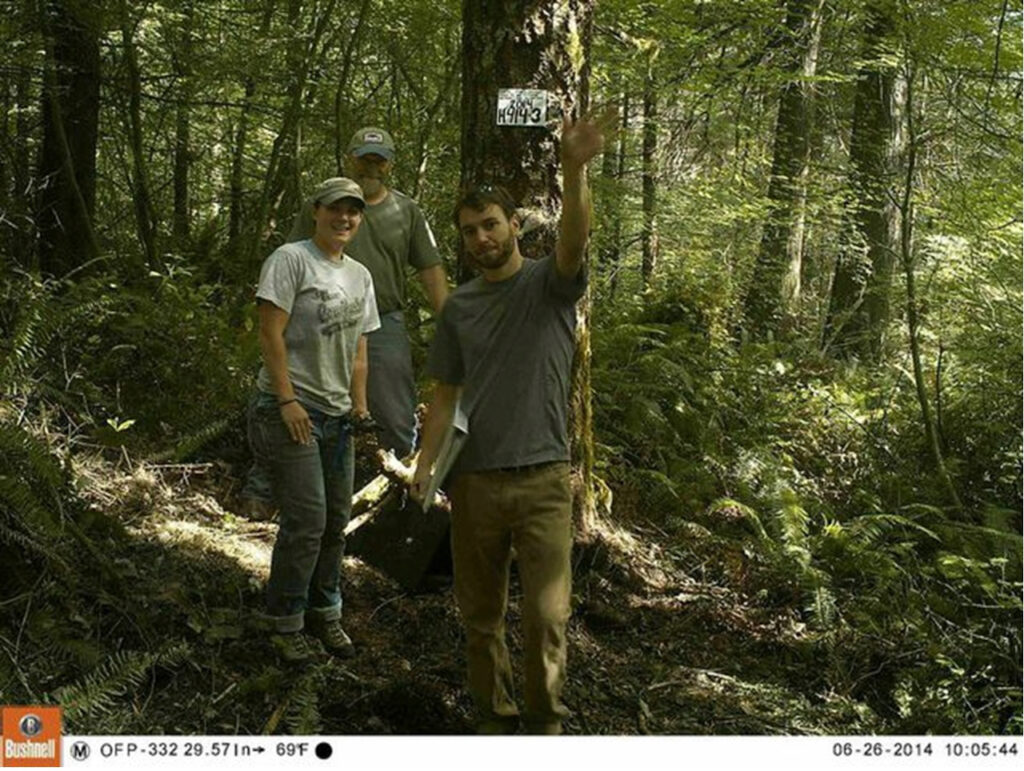By Dave Rugh
From 2014 to 2016, the Land Trust participated in the Fisher Monitoring Program at various sites on the Quimper Peninsula, following protocol established by the National Park Service and the Washington Department of Fish and Wildlife. Fishers are in the weasel family, about the size of a domestic cat. They are highly energetic and eat a variety of prey, including rabbits, mountain beavers, and even porcupines; plus, fishers are eaten by other predators, i.e., they are mesopredators.

Although no fishers were photographed here, we did get many other animals attracted to the bait, such as opossums (146x), black bears (25x), coyotes (12x), dogs (9x), a raccoon (1x), Steller’s Jays (7x), Vultures (2x), and Ravens (2x). A cougar, squirrels, and deer plus various birds were also photographed, but they were incidental to the baited tree. At each site, there was a motion-sensing camera placed 9-18ft from a tree with chicken bait plus lure and a triangular tunnel (called a cubby) that had brushes which could gather hair, allowing for individual identification of each animal via DNA.

This year on July 1, the Land Trust began the project again with two cameras each in the Snow Creek Forest, the Duckabush Riparian Forest, Valley View Forest, and one each in the Quimper Wildlife Corridor and at Chai-yahk-wh. At approximately 3-week intervals, the cameras will be checked until early September.
